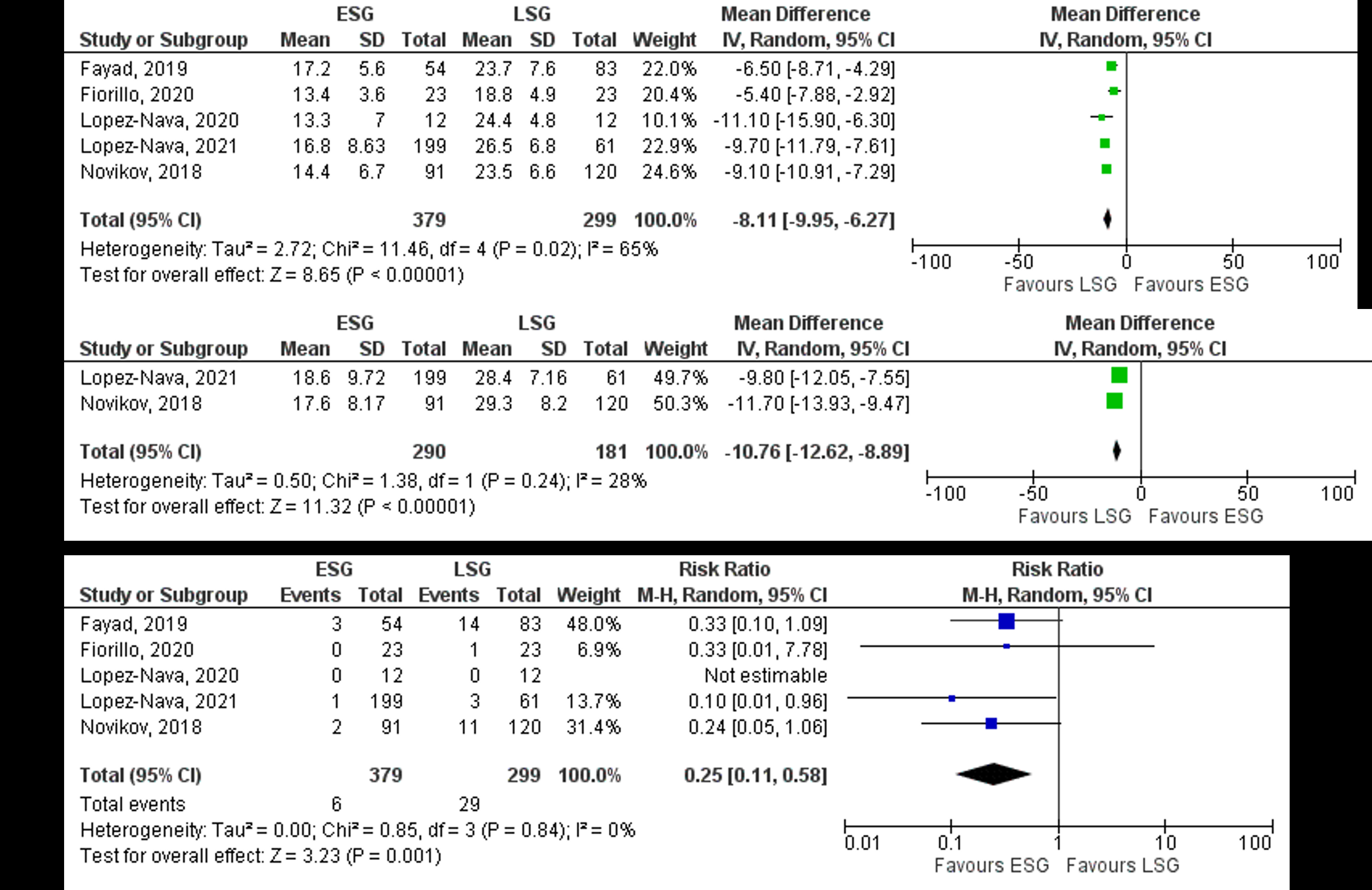DIRECT COMPARATIVE EFFICACY AND SAFETY OF ENDOSCOPIC SLEEVE GASTROPLASTY VS. LAPAROSCOPIC SLEEVE GASTRECTOMY: A SYSTEMATIC REVIEW AND META-ANALYSIS
Azizullah Beran*1, Reem Matar3, Veeravich Jaruvongvanich2, Abdullah I. Alalwan1, Ray Portela2, omar ghanem2, Barham K. Abu Dayyeh2
1Internal Medicine, The University of Toledo, Toledo, OH; 2Mayo Foundation for Medical Education and Research, Rochester, MN; 3University of Toronto, Toronto, ON, Canada
Introduction: Endoscopic sleeve gastroplasty (ESG) is a novel endobariatric procedure that has recently gained ground. Several reviews indirectly compared the outcomes of ESG vs. laparoscopic sleeve gastrectomy (LSG). However, data regarding direct effectiveness and safety of ESG vs. LSG is still limited. This meta-analysis aims to perform a direct comparison between ESG and LSG in terms of efficacy and safety.
Methods: We performed a comprehensive literature search of PubMed, Embase, and Cochrane databases for all published studies that directly compared the outcomes of ESG vs. LSG through October 20, 2021. Single-arm studies were excluded. The primary outcome was the total body weight loss percentage (TBWL%) at 6 and 12 months. The secondary outcome was the complication rate. Pooled mean difference (MD) and risk ratio (RR) with the corresponding 95% confidence intervals (CIs) were obtained by the Mantel-Haenszel method within a random-effect model.
Results: Five observational studies involving 678 patients (379 in the ESG group and 299 in the LSG group) were included. The mean age was 44.2±10.3 years, the mean body mass index (BMI) was 41.8±7.5 kg/m2. Seventy percent of patients were females. At 6 months, the pooled rate of TBWL% for ESG was 15.96±7.62 and for LSG was 23.84±6.97. ESG achieved significantly lower TBWL% at 6 months compared to LSG (MD -8.11, 95% CI -9.95 to -6.27, P < 0.00001, Figure 1A). Only two studies reported the TBWL% at 12 months. The pooled rate of TBWL% of ESG was 18.3±9.3 and of LSG was 28.9±7.9 at 12 months. ESG achieved significantly lower TBWL% at 12 months compared to LSG (MD -10.76, 95% CI -12.62 to -8.89, P <0.00001, Figure 1B). The complication rate for ESG was significantly lower compared to LSG (1.6% and 9.7%, respectively) (RR 0.25, 95% CI 0.11-0.58, P = 0.001, Figure 1C).
Conclusions: ESG achieved clinically adequate but lower short-term weight loss when compared to LSG, with a fewer complication rate. ESG is an acceptable minimally invasive endobariatric option for patients with mild to moderate obesity, poor surgical candidates, or opting to pursue alternative options to bariatric surgeries.
Figure 1
Back to 2022 Abstracts
